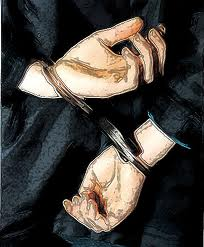Most loss prevention and asset management personnel make the mistake of thinking that shrinkage only comes from outside shoplifters. However,  organized retail theft is growing, resulting in estimated losses of anywhere from $15 billion to $30 billion per year for supermarkets, chain drug stores, independent pharmacies, mass merchandisers, convenience stores, and other retailers. In fact, around 90 percent of retailers have been victims of these theft rings! This isn't the work of average, petty shoplifters; on the contrary, this is the work of professional theft rings that travel across state lines to pilfer large amounts of merchandise and resell it. Even worse, these theft rings utilize employees on the inside to help steal goods right out from your nose.
organized retail theft is growing, resulting in estimated losses of anywhere from $15 billion to $30 billion per year for supermarkets, chain drug stores, independent pharmacies, mass merchandisers, convenience stores, and other retailers. In fact, around 90 percent of retailers have been victims of these theft rings! This isn't the work of average, petty shoplifters; on the contrary, this is the work of professional theft rings that travel across state lines to pilfer large amounts of merchandise and resell it. Even worse, these theft rings utilize employees on the inside to help steal goods right out from your nose.
To prevent organized retail theft, there are a few things you can do that all require arming yourself with knowledge - about your employees, your customers, and theft rings themselves.
- Know your employees. Is Bobby in the stockroom a hardworking college student, or is he part of a larger organized retail theft ring? The best way to know who this prospective employee really is involves having his documents authenticated.
- Know your customers. As much as you like them, some of your customers could be contributing to your inventory's shrinkage rate - and not just by slipping high-value inventory into their coats. Bad checks and fraudulent credit cards could be one of their tactics. Once again, you'll need to authenticate their documents with a UV counterfeit detector or image capturing product.
- Know what gets stolen. In general, organized retail theft rings target designer clothing, handbags, lingerie, and accessories. In drugstores, mass market retailers, and grocery stores, they're looking for infant formula, over-the-counter drugs, razor blades, and high-end health and beauty aids, like scar removal cream. At electronics retailers, whatever the latest cool, exciting device is what theft rings want to resell.
- Know what they do with the merchandise. In addition to selling stolen goods on eBay or Craigslist, theft rings will often try to return merchandise to other stores using fraudulent receipts - or no receipts at all. Here, you can test for fake receipts or fake driver's licenses, since it's unlikely that a fraudulent return will be accompanied by a real driver's license. You can also use special ink to print your receipts that even low-level employees can detect by swiping a "decoder" pen across the receipt. If the printed message doesn't show up, the employee can't do the return.
- Know how to tag your inventory. One truly excellent way of cutting off thieves at the pass is to tag your inventory for easy recovery. These asset tagging marks are invisible and assist law enforcement personnel in finding out where the items were stolen from - like your store.
You can keep your store safe from shrinkage by arming yourself with knowledge about these organized retail theft rings and their methods, then taking action against them. In turn, you'll see higher profitability, happier customers (because you won't have to raise your prices to counteract the cost of shrinkage), and even happier staff, because they won't worry about Bobby in the stockroom screwing up the store for the rest of them.


